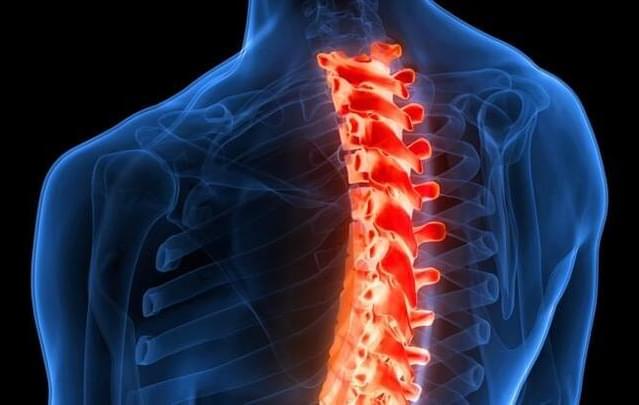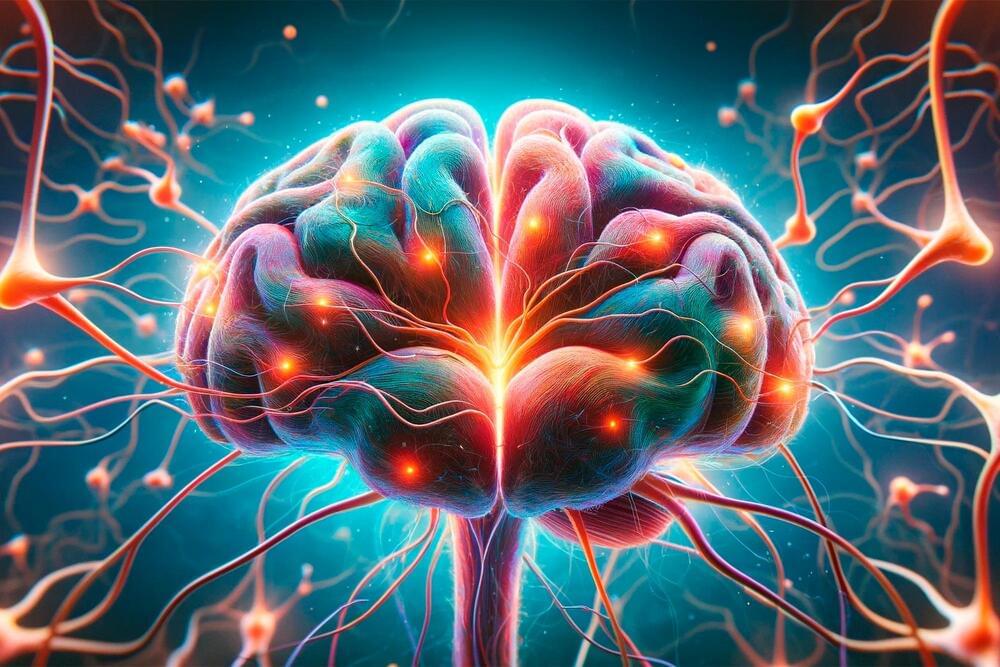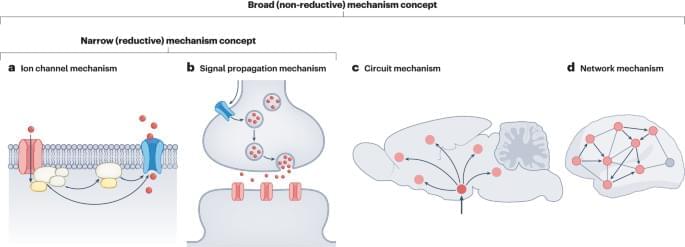Not science per se, but factual and I’ll admit I feel drained a lot.
Category: neuroscience – Page 443

Newly Launched GPT Store Warily Has ChatGPT-Powered Mental Health AI Chatbots That Range From Mindfully Serious To Disconcertingly Wacko
In today’s column, I will examine closely the recent launch of the OpenAI ChatGPT online GPT store that allows users to post GPTs or chatbots for ready use by others, including and somewhat alarmingly a spate of such chatbots intended for mental health advisory purposes.
OpenAI has launched their awaited GPT Store. This is great news. But there are also mental health GPTs that are less than stellar. I take a close look at the issue.

The Neuroscience of Learning and Memory
Jeanette Norden, Professor of Cell and Developmental Biology, Emerita, Vanderbilt University School of Medicine, explores how the brain learns and remembers. This video focuses on a discussion of how the brain is organized in general.
These lectures will provide the foundation.
information necessary to the understanding.
of the lectures which will follow. A special.
emphasis will be given to systems in the brain.
that underlie learning and memory, attention.
and awareness. These introductory lectures.
will be followed by a lecture on how different.
areas of the brain encode different, specific.
types of information—from the phone number.
we need only remember for a few minutes or.
less to the childhood memories we retain for.
a lifetime. We will also address the \.

The Spinal Cord Could Provide a Radical New Way to Treat Depression
With depression affecting around 1 in 10 of us at some point during our lives, the need for new and improved treatments is a top priority for researchers – and it appears that spinal cord stimulation could be one route for experts to investigate.
A team led by researchers at the University of Cincinnati College of Medicine devised a pilot clinical trial in which a little black box was placed on the spinal cord of 20 volunteers with depression, with one electrode on the back and one on the right shoulder.
The box then delivered a specially customized, low-level electric buzz to half of the volunteers, for three sessions per week over eight weeks. This was shown to have a greater effect on depressive symptoms than the different, ‘placebo’ charge administered to the other half of the volunteers.

The Brain’s Secret Handshake: Research Reveals Function of Little-Understood Synapse
Discovery could be useful in developing new therapies for multiple sclerosis, neurodegenerative conditions, and brain cancer.
New research from Oregon Health & Science University for the first time reveals the function of a little-understood junction between cells in the brain that could have important treatment implications for conditions ranging from multiple sclerosis to Alzheimer’s disease, to a type of brain cancer known as glioma.
The study will be published today (January 12) in the journal Nature Neuroscience.

Unpacking the modeling process for energy policy making
On top of this, the use of quantification has significantly increased over the last decades with the inflation of metrics, indicators, and scores to rank and benchmark options (Muller, 2018). The case of energy policy making in the European Union is again an effective example. The European Union’s recent energy strategy has been underpinned by the Clean Energy for all Europeans packages, which are in turn supported by a number of individual directives, each one characterized by a series of quantitative goals (European Commission, 2023). The quantification of the impact (impact assessment) is customarily required to successfully promote new political measures (European Commission, 2015a) and is in turn based on quantification, often from mathematical models (Saltelli et al., 2023). The emphasis on producing exact figures to assess the contribution of a new technology, political or economic measure has put many models and their users into contexts of decision-making that at times extends beyond their original intent (Saltelli, Bammer et al., 2020). At the same time, the efforts to retrospectively assess the performance of energy models have been extremely limited, one example being the Energy Modeling Forum in the United States (Huntington et al., 1982). In spite of this, retrospective assessments can be very helpful in understanding the sources of mismatch between a forecast and the actual figures reported a posteriori (Koomey et al., 2003). For example, long-range forecast models are typically based on the assumption of gradual structural changes, which are at stake with the disruptive events and discontinuities occurring in the real world (Craig et al., 2002). This dimension is especially important in terms of the nature and pace of technology change (Bistline et al., 2023 ; Weyant & Olavson, 1999). A further critical element in this approach is the cognitive bias in scenario analysis that naturally leads to overconfidence in the option being explored and results in an underestimate of the ranges of possible outcomes (Morgan & Keith, 2008).
Additionally, in their quest for capturing the features of the energy systems represented, models have increased their complicatedness and/or complexity. In this context, the need to appraise model uncertainty has become of paramount importance, especially considering the uncertainty due to propagation errors caused by model complexification (Puy et al., 2022). In ecology, this is known as the O’Neil conjecture, which posits a principle of decreasing returns for model complexity when uncertainties come to dominate the output (O’Neill, 1989 ; Turner & Gardner, 2015). Capturing and apportioning uncertainty is crucial for a healthy interaction at the science–policy interface, including energy policy making, because it promotes better informed decision-making. Yet Yue et al. (2018) found that only about 5% of the studies covering energy system optimization models have included some form of assessment of stochastic uncertainty, which is the part of uncertainty that can be fully quantified (Walker et al., 2003). When it comes to adequately apportioning this uncertainty onto the input parameters and hypotheses through sensitivity analysis, the situation is even more critical: Only very few papers in the energy field have made the use of state-of-the-art approaches (Lo Piano & Benini, 2022 ; Saltelli et al., 2019). Further to that, the epistemic part of uncertainty, the one that arises due to imperfect knowledge and problem framing, has been largely ignored in the energy modeling literature (Pye et al., 2018). For instance, important sources of uncertainties associated with regulatory lag and public acceptance have typically been overlooked. 1
In this contribution, we discuss three approaches to deal with the challenges of non-neutrality and uncertainty in models: The numerical unit spread assessment pedigree (NUSAP) method, diagnostic diagrams, and sensitivity auditing (SAUD). These challenges are especially critical when only one (set of) model(s) has been selected to contribute to decision-making. One practical case is used to showcase in retrospective the relevance of the issue and the associated problems: the International Institute for Applied Systems Analysis (IIASA) global modeling in the 1980s.

DNA from ancient Europeans reveals surprising origins of multiple sclerosis
DNA obtained from the bones and teeth of ancient Europeans who lived up to 34,000 years ago is providing insight into the origin of the often-disabling neurological disease multiple sclerosis, finding that genetic variants that now increase its risk once served to protect people from animal-borne diseases.

Causation in neuroscience: keeping mechanism meaningful
‘Mechanism’ is a frequently used causal concept in neuroscience but can have different meanings that are often not specified. In this Review, Ross and Bassett explore these different meanings and the challenges associated with the variable usage of this term before discussing how these challenges may be met.

Unlocking Hypnosis: Stanford Enhances Brain Power With Neurostimulation
Stanford Medicine scientists used transcranial magnetic stimulation to temporarily enhance hypnotizability in patients with chronic pain, making them better candidates for hypnotherapy.
How deeply someone can be hypnotized — known as hypnotizability — appears to be a stable trait that changes little throughout adulthood, much like personality and IQ. But now, for the first time, Stanford Medicine researchers have demonstrated a way to temporarily heighten hypnotizablity — potentially allowing more people to access the benefits of hypnosis-based therapy.
In the new study, published on January 4 in Nature Mental Health, the researchers found that less than two minutes of electrical stimulation targeting a precise area of the brain could boost participants’ hypnotizability for about one hour.